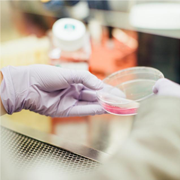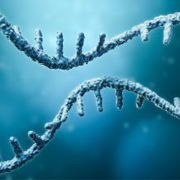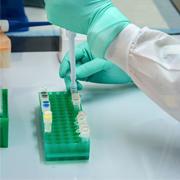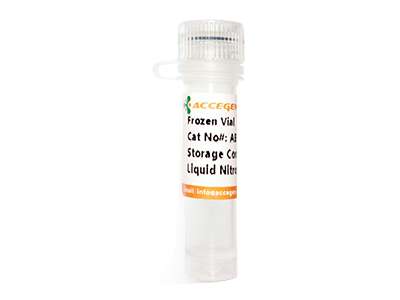Home > Products > Tumor Cell Lines > Human Tumor Cell Lines >
EC-109 |
||||
|---|---|---|---|---|
| Product Name |
EC-109 |
|||
| Price | Get Quote | |||
| Product Code | Eca109; Eca 109; EC-109; EC109 |
|||
| Cat.No |
ABC-TC508S |
Species |
Human |
|
| Size/Quantity |
1 vial |
|||
| Shipping Info |
Dry Ice |
Storage |
Liquid Nitrogen |
|
| Description |
The EC-109 cell line, originating from human esophageal squamous cell carcinoma tissue, serves as a well-established and widely utilized tool in biomedical research. Initiated in 1973, these cells were derived from squamous tissue located in the middle segment of the human esophagus. The primary culture was established using the small-block method, facilitating the preservation of the cellular characteristics representative of esophageal cancer.
Distinguished for its relevance in modeling esophageal cancer, the EC-109 cell line has been instrumental in elucidating the molecular intricacies, cellular dynamics, and therapeutic responses associated with this malignancy. Notably, tumors derived from EC-109 cells have been successfully transplanted into BALB/c nude mice, further enhancing the utility of this cell line as an experimental model for preclinical investigations. This comprehensive characterization positions EC-109 as a valuable resource in advancing our understanding of esophageal cancer pathogenesis and in the exploration of potential therapeutic interventions.
Why choose EC-109 from AcceGen? EC-109, available from AcceGen, represents a meticulously validated and characterized human esophageal cancer cell line, contributing significantly to biomedical research. Rigorous quality control measures are implemented to ensure the reliability and authenticity of EC-109 cells for scientific investigations.
Quality control tests (QC) performed on EC-109 include:
Sterility Assessment: EC-109 cells undergo comprehensive testing to confirm negativity for contamination, encompassing bacterial, fungal, and mycoplasma (PCR). Furthermore, the cells are verified to be free from any human pathogens.
Viability Evaluation: Viability Assessment: EC-109 cells have a very high survival rate after thawing, ensuring optimal cell health and function.
Identity Confirmation: Short Tandem Repeat (STR) analysis is conducted using 16 probes, comprising 15 STR loci and Amelogenin, to authenticate the identity and genetic stability of EC-109 cells.
Growth Characteristics: The growth behavior of EC-109 is assessed based on morphology and immunocytochemistry, including the examination of multiple undifferentiation markers, ensuring the preservation of essential cellular features. |
|||
| Source Organ | Esophagus |
|||
| Recommended Medium And Supplement | RPMI 1640 + 10% FBS |
|||
| Citation Guide |
When you publish your research, please cite our product as “AcceGen Biotech Cat.# XXX-0000”. In return, we’ll give you a $100 coupon. Simply click here and submit your paper’s PubMed ID (PMID). |
|||
| Application | FOR RESEARCH USE ONLY
Today, esophageal cancer (EC) has become one of the most common cancer types in US. Therefore, new drug and therapeutic strategies are urgently needed to improve postoperative survival rate of patients with EC. As a food additive, several lines of evidence have shown that citric acid can be served as glycolysis suppressor to inhibit growth of some tumor cells. However, little is known about the effect of this organic acid on the growth of human esophageal carcinoma cell line, EC-109. Some key applications of the EC-109 cell line in science research include:
Esophageal Cancer Studies EC-109 serves as a valuable model for investigating the molecular mechanisms, cellular behaviors, and pathophysiology associated with esophageal cancer. Researchers can use this cell line to gain insights into the underlying factors contributing to the development, progression, and drug resistance of esophageal squamous cell carcinoma.
Drug Sensitivity and Resistance Studies EC-109′ s response to various anticancer drugs can be explored, aiding in the identification of potential therapeutic agents and understanding mechanisms of drug resistance. This is crucial for developing targeted and effective treatments for esophageal cancer patients.
Molecular Biology and Genetics Research Researchers can utilize EC-109 cells to study the genetic and molecular alterations characteristic of esophageal cancer. This may involve investigating gene expression profiles, signaling pathways, and potential biomarkers associated with the disease.
Cellular Behavior and Invasion Assays EC-109 is often employed in studies assessing cellular behaviors such as proliferation, migration, invasion, and cell cycle progression. These investigations contribute to a comprehensive understanding of the biological properties of esophageal cancer cells.
Preclinical Drug Screening EC-109 can be used in preclinical drug screening assays to evaluate the efficacy of novel compounds or existing drugs for potential therapeutic applications. This aids in the identification of promising candidates for further development.
Immunocytochemistry and Biomarker Analysis The cell line’ s suitability for immunocytochemistry allows researchers to analyze the expression of specific biomarkers and proteins associated with esophageal cancer. This contributes to the identification of diagnostic and prognostic markers. |
|||
| Growth Conditions | 37 ℃, 5% CO2 |
|||
| Cell Type | Epithelial |
|||
| Growth Mode | Adherent |
|||
| Product Type |
Human Esophageal Cancer Cell Lines |
|||
| Product Image | ||||
- ONLINE INQUIRY
- PRODUCT REVIEWS
Fill out a request in the form below and we’ll get back to you within 24 hours with a quote.








